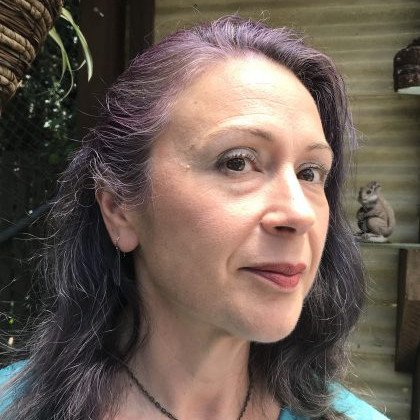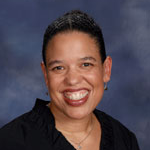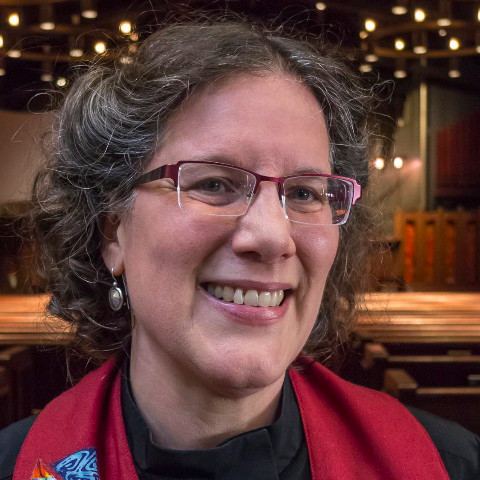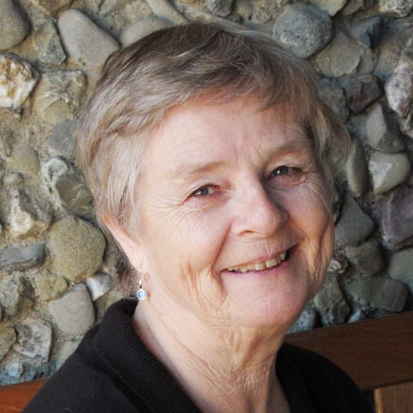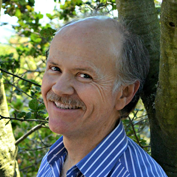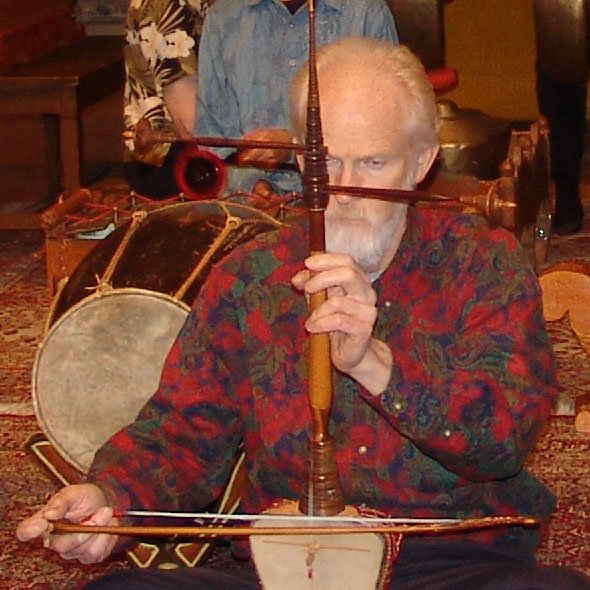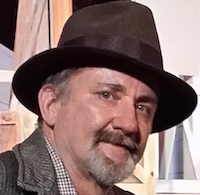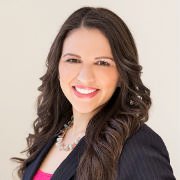On December 6 from 1:00 – 3:30 pm 36 people gathered in the Fireside Room to explore UUCB’s Justice (Faith in Action) Programs and our interest and efforts to effectively devote our time, energy, passion and resources to expressing our spirituality and making a difference through Justice Making.
The discussion was lively and engaging. And Rev. Greg was joined by UUCB Justice Leaders, Rev. Craig Scott, Natalie DaSilva, Lee Lawrence and Ray Westergard.
We had two readings to light our chalice and start the meetings – one from Pope Francis and one from UU Social Ethicist and Theologian, James Luther Adams.
“It is true that going out on to the street implies the risk of accidents happening, as they would to any ordinary man or woman. But if the Church stays wrapped up in itself, it will age. And if I had to choose between a wounded Church that goes out on to the streets and a sick, withdrawn Church, I would definitely choose the first one.”
Pope Francis
“A church that does not concern itself with justice, or show concern for things to come, and does not interpret the signs of the times, is not a prophetic church. The prophetic church does not assign responsibility merely to an elected few. All persons in a prophetic church work to interpret the signs of the times in light of their faith. All members share the common responsibility to make history rather than merely be pushed around by it.”
James Luther Adams
These leaders offered some testimonials about how and why justice was at the heart of their spiritual exploration and expression.
All of our facilitators were at our November 9 ‘Who Are We?’ Conversation and three of them (Natalie DaSilva, Lee Lawrence and Ray Westergard) attended the break out group exploring our Faith in Action efforts. The purpose of that conversation was to reflect upon and analyze our congregation’s energy flow. In particular, we were looking at where we were putting energy into programs or projects that was effective at exciting and stimulating our members / friends and our larger community affiliations. In other words, energy invested that was ‘paying off.’ We also were looking at what energy we were putting in that was either not being recovered (lost) or that was not being leveraged effectively. Faith in Action was one of 12 program areas that were explored and the results from that conversation were as follows (Complete results for all program areas can be found at https://uucb.org/images/stories/documents/transition-team/20141109-UUCB_Who_Are_We-Conversation-Notes.pdf
REPORT OUT ON “WHO ARE WE?’ CONVERSATION
WHERE FAITH IN ACTION IS EXPERIENCING ENERGY
- Working with CCISCO on education;
- Housing / hiring for UC campus in Richmond;
- Cease fire walks,
- Prop 47 support
- GRIP Harmony walk,
- Food prep at Souper Center
- Transylvania minister support – 18 in total
- Read-aloud Program
- Bring Your Weight in Food
- Interfaith Immigration Vigil
WHERE FAITH IN ACTION IS LOSING (OR FAILING TO LEVERAGE) ENERGY
- Immigration activities,
- New sanctuary movement
- Kids in court
- Climate change and state of planet,
- XL pipeline
- More coordination with UUA programs
Rev. Greg pointed out that everything we identified with gaining or losing energy was a task or goal or specific project. Without exception (and this, he explained, was true for almost ALL our other 11 program areas) our overall focus was ‘task focused.’ In other words, everything everyone in the group named and wrote down as areas/reasons we were gaining/losing energy was a specific project.
No one identified anything to do with ‘process.’
Rev. Greg pointed out that Organizational Management consultants (of which he is one) differentiate between a ‘project’ and ‘the process’ by which a project is carried out. The process has to do with not what is done but how it’s done. This means, how are decisions made, how are people informed, invited, integrated into the work, supported, appreciated? How are the outcomes and the impacts of the work reflected on, noted, communicated, celebrated, used as helpful feedback? How is the work used to help meet the needs for relationship, meaning, helping our identity and depth of participation evolve?
Organizational Consultants (OCs) usually find that a greater understanding of energy gain/loss will be found in exploring process rather than project. So, when we are 100% focused on project, we miss our opportunities to see how we can become even more effective and engaged. OCs will usually recommend that a program focus 60% of its attention on process and 40% on task.
UUs, however, are ‘doers’. We’re action people. We like task to the exclusion of all other things. The problem with this is we don’t manage conflicts or learn from our efforts as much as we could. So we don’t learn about becoming more effective or gain a deeper connection or sense of meaning to our work.
There is also a problem in that the conflicts we run into tend to be about a competition between which projects we give our attention – and there is often more projects than time, attention or resources to do well.
UUs are known for our great strength: inclusivity. Both the Unitarians and Universalists have a history of being radically inclusive. We have great difficulty abiding with marginalization or exclusion. We don’t want anyone or anything left out. So, when it comes to choosing what projects we do, we tend to want to include everything.
UUs are also well known for our great weakness: inclusivity. Although we refuse to limit our attention and effort on a few projects, we fail to notice that our resources (attention, energy, money, etc.) cannot adequately support the number of projects we care about. And we have very little practice and skill built up in ‘process’ to help us make decisions.
This leads to one of the great realizations among OCs that the reason we fail to make very many people happy is that we start out trying to make EVERYONE happy. We try to be ALL THINGS to ALL PEOPLE.
It also leads to one of the great criticisms that our detractors cite against us: we are ‘a mile wide and an inch deep.’
Rev. Greg explained that why he was interested in calling together the key stakeholders of the justice program was to explore how to be more effective with our process of justice making, thus, increasing the energy we are able to focus into and harvest out of our efforts. He explained that a lot of the principles he was advocating are being used effectively by a few of our well known justice-based churches (Rochester, All Souls DC and All Souls Tulsa and 150 other congregations) that are using the ideas in the UUAs Justice Empowerment Handbook. Congregational leaders in these churches report that it has helped them ‘to focus, strengthen and grow’ their justice programming. You can read through the empowerment handbook on line at http://www.uua.org/documents/aw/sje_handbook.pdf
We then turned our attention to the question of:
‘If we chose to move from ‘doing a little with a lot of programs’ to ‘doing a lot with a few programs’ what would be the criteria for success that we would identify to help us make those choices?’
We explored some of the criteria identified in the Empowerment Handbook that each project we sponsored and supported would:
- Target high participation (25% of membership participate ‘in some way’ each year)
- Interface with at least 3 other programs (Worship, Music, Children’s RE, etc.)
- Have regular intentional reflection on action / engagement
- Contain a multigenerational component
- Contain social / relational / spiritual components
It was agreed that these were just some of the arbitrary criteria (taken largely from the handbook) that could be used. We broke out into four small discussion groups to brainstorm more ideas for criteria that could be used. What follows are what we recorded when those small groups reported out their ideas.
Criteria for a Social Justice Project to be Successful
Group 4
- More diversity in connecting with groups outside the church – race/age/
- Engagement – getting more people in the congregation involved – measuring time talent and treasure. Decide what is a significant amount
- More intergenerational involvement – measure by taking photographs and sharing with the community on a regular basis.
- More dogs.
- Have once a month potluck dinners to communicate and share new understandings
Group 1
- Multiple pathways to engagement that are being utilized
- Measurable outcome and ongoing evaluation – internal and external
- Basic level of satisfaction by the people involved
- Project would bring in new members – not just members but stakeholders and influencers
- Bring a renewal of energy and creativity for congregation
- People in the community would say ‘wow’
- Engage people at many levels. Some want to do things once /wk and some once/yr.
Group 2
- Intergenerational
- Interethnic and multicultural.
- Significant commitment of time
- Deep ownership
- Good communication (timely) allow for good planning
- Recognition of oppression and a challenge to it as part of each project
- Stories of individuals / testimonials brought back to the congregation and could inform vision of church
- Hope for multiple ways to participate – options offered
- Broad definition of church – also means being out in community as opposed to being in worship
- Project be connected to core UU values
- Technological astute and broadcast
- Be outside our comfort zone so we’d think things that would challenge us and take us into the community
- Wish for good listening – partnering instead of white privilege and patronizing participation
- We are often getting more than we are giving
- Meeting for all the churches involved in CCISCO at a common meeting place and listening to all the concerns from the other churches
- More awareness of power and the uses of power – becoming more self aware of our position as a church in class distinction
- Distinguishing good power vs. bad power – are we empowering or disempowering
- We challenge things that are frightening the community – are there ways in which fear is disguised as love
- More dogs (and horses) must pass a creedal test
Group 3
We would know a project was successful if…
- If it reflects ways in which UUCB could unique or special in our approach to justice
- If it is recognized or acknowledge in the greater community we’re serving
- If it has outcome measures that help celebrate the outcome impact
- If it demonstrates pride, energy, joy, fun, enthusiasm
- If it supports partner agencies
- Includes group singing
- Not enough dogs.
There is evidence that there was some levity in our group conversations. We next turned our attention to what our overall Faith in Action Program might set as comprehensive criteria for the whole Justice Programming of UUCB.
Rev. Greg suggested some of the criteria taken from the Handbook.
The Faith in Action Program at UUCB would have:
- At least one denominational project (UUSC, UU Study Action Issue, etc.)
- At least one project that serves our local community?
- At least one project that is a ‘global’ project
- Projects chosen through a democratic process
- Involve 80% of our members (knowing that there are many ways to be involved other than direct participation in a project – attending a reflection group, writing a letter to a legislator, donating in our good neighbors program, etc.)
BRAINSTORM BY ATTENDEES OF OVERALL PROGRAM CRITERIA
Group 3
- Setting project timelines
- Having budgets and reporting
- Different opinions for the right structure is a governing committee
- Alternative view of ‘Swiss’ that all the ideas for projects would go before the congregation for participation. There would need to be a referendum with a critical mass for approval
Group 2
- Focused on ways of measuring engagement
- Include financial engagement – ways to measure time talent and treasure
- Measure the degree of leadership and expertise
- Participation in reflection and planning
- Have questionnaires and surveys
- Quantitative vs Qualitative ways of measuring
- What is it that we are making visible
- Determining what we have to make things known, effective, impacting
- Perhaps lowering participation to 66% rather than higher (noted that 18% will not participate no matter what you do)
- How would we measure task vs process
- Enthusiasm in our group for monthly social justice potluck
- People in the membership list (official members) only 200 are showing up in church activities – finding ways to engage the other 225.
- Consider those who want to be ‘spiritual’ and not ‘justice’ minded
- Once a year survey – follow up to surveys from Linda L. and Jane M.
Group 1
- UUCB will be seen as a justice-making congregation
- Variety in scope and level of participation in applying pathways to involvement
- Overall communication
- Component of leadership training – interfaith
- Ongoing reflection and personal growth
- Congregation will fund with significant budget
- Children and youth will be informed and involved
Group 4
- Qualitative and Quantitative criteria
- Does our program change lives – hope so but hard to measure
- ‘Wow’ factor – have experienced it but how do we measure
- Identify specific talents of people in congregation and encourage people to get involved
- More communication in the church
- See a monthly report on how much is it collected and where does it go – make info available to all congregation
- How much treasure – setting a target amount
- How much time is an appropriate target
- Working in the kitchen making meals and organizing potlucks
- Put Kelly in charge of everything
- Membership growth would be an indicator of dynamism.
Rev. Greg then turned to the question of “If we employed a certain set of these kinds of criteria, HOW MANY projects do we think we could SUCCESSFUL sponsor?
After realizing that many of our specific projects are actually subsets of a larger existing project (CEASE FIRE WALKS, for example is a subset of CCISCO; and the Undie Sunday and Coat Drive and Harmony Walk are all subsets of GRIP), we realized that some projects may have many facets. We began to hear from people who suggested we could do between 3 – 6 projects.
Questions were raised about what would we do about programs we were currently ‘doing’ that we decided didn’t meet whatever criteria we decided upon. A good conversation ensued about ‘Sponsored’ programs and ‘Affiliated’ programs. It was suggested that we could have ‘sponsored programs’ that we intentionally chosen as those that the congregation would ‘support’ and ‘affiliated programs’ that the congregation understood as worthy and essential programs, but ones that we ‘have faith’ that individuals and neighboring agencies will support (so UUCB doesn’t have to ‘do everything’).
A ‘sponsored’ program is one that UUCB actively commits its assets (including channeling financial support, offering space and dedicating staff and lay leadership) toward
An ‘affiliated’ program is one about which UUCB is informed, can recommend and offer information / contact information on. But there is no dedication of institutional assets or resources (i.e., we can appreciate / encourage our members’ choices to support… but UUCB won’t – at this time – devote institutional assets or resources)
Finally, we turned our collective attention to how we could best channel our energy to become more intentionally organized. Three main groups seemed important:
- A Design Team
This would be the team that would gather and study the feedback from this meeting, explore applicable aspects of the empowerment handbook and come up with a manageable and sustainable organizational process that could guide us in carrying out social justice programming. This would involve
- A Design Team
- Meeting 2-3 times per month for about 3 months
- Coming up with the measurable criteria for each project and for the program as a whole.
- Determining how many projects UUCB could successfully sponsor
- Drafting this blueprint as a charter to submit to the CT and Board of Trustees
- Invite regular opportunities for stakeholders to provide feedback
- A Faith in Action Council
- A group of people who operate in accord with the design for the Faith in Action Program
- Ideally, made up of all the point people (accountable people from each of the sponsored projects) as well as other people who help with process (ie. a chair or secretary)
- Justice Stakeholders
- These are the real supporters of the projects AND the process
- Those who could attend a monthly Social Justice Potluck
- Those who could participate in Process or Reflection Circles to help share the news of the actions taken and distill their meaning.
A number of people signed up to be on the design team. Rev. Craig and Natalie agreed to lead the group and suggested the group meet 2-3 times / mo. 7 other people expressed interest in contributing to the design team. Craig and Natalie will contact those people.
Rev. Greg agreed to get notes out to participants within the following week.
With great enthusiasm and appreciation, the group adjourned.


